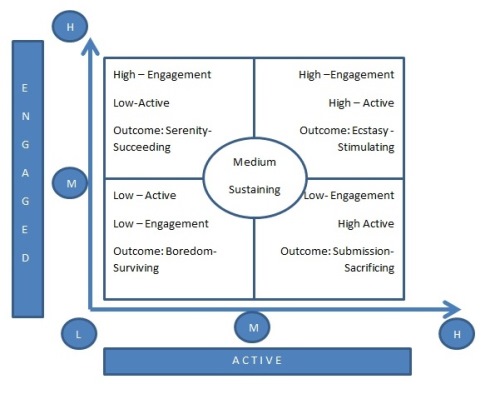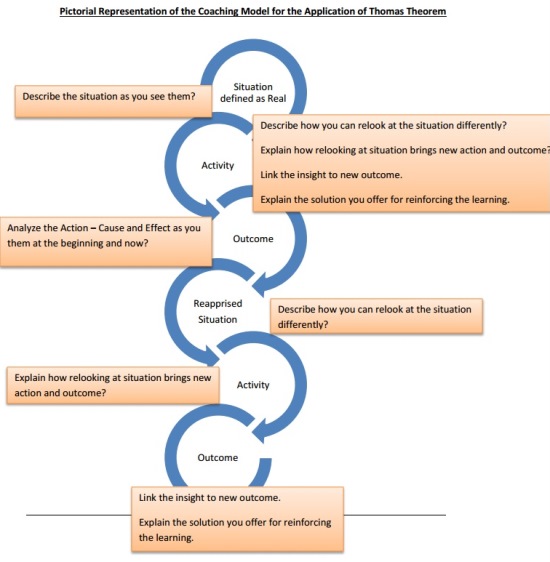
Coaching as a field is still evolving. A good coach can be one who is extremely strong in subjects such has psychology, sociology, philosophy, etc. But to move coaching to a discipline, meaning a well-recognized profession, requires a continuous application of scientific principle to coaching. A scientific approach means continuously synthesizing well-established models to coaching.
The Thomas Theorem is a theory of sociology which was formulated in 1928 by W. I. Thomas and D. S. Thomas. It states:
“If men define situations as real, they are real in their consequences”
In other words, the interpretation of a situation causes the action.
This interpretation is not objective.
Actions are affected by subjective perceptions of situations. Whether there even is an objectively correct interpretation is not important for the purposes of helping guide individuals’ behavior.
In 1923, Thomas stated more precisely that any definition of a situation will influence the present. Not only that, but—after a series of definitions in which an individual is involved—such a definition also “gradually [influences] a whole life-policy and the personality of the individual himself.” Consequently, Thomas stressed societal problems such as intimacy, family, or education as fundamental to the role of the situation when detecting a social world “in which subjective impressions can be projected on to life and thereby become real to projectors.”
Coaching Model for application of Thomas Theorem:
Step 1: Coachee to define the coaching topic
Step 2: Situation selection by coachee
Step 3: Coachee to define the situation
DEALO Question (Refer my earlier blog post)
Describe the situation as you see them?
Step 4: Coachee to analyze the activity & outcome of the given situation (Pre- Reappraising)
Show the coachee how Interpretation is not objective. The coachee is to analyze the real facts and interpreted facts of the given situation (Thomas Theorem).
One way to synthesize the Thomas Theorem is to integrate it to a coaching tool for being for Mindful Engagement.

DEALO Questions
Analyze objectively the facts that make the situation real for you.
Explain in brief how less objective facts make the situation unreal.
Link the less objective outcome with the situation.
Analyze the action: What are the causes and effects as you them at the beginning and now?
Step 5: Coach helps the coachee to reappraise the situation
DEALO Question
Describe how you can relook at the situation differently.
Step 6: Coachee to analyze the activity and outcome of the reappraised situation. Insight = Pre-reappraisal outcome –Post-reappraisal outcome.
DEALO Question
Explain how relooking at situation brings new action and outcome.
Link the insight to new outcome.
Explain the solution you offer for reinforcing the learning.


R R Krishna has about 30 years of work experience, in Human Resources spanning different industries. He is a PCC, – ICF, RPCC – RCS, CMC – BCI/ICC with 15 years of coaching experience and also member of International Association of Coaching, Asia Pacific alliance of coaches and Association of Coaching. Find more about Krishna at www.rrkrishna.com.
Registered office
119, (old 65) P S Sivaswamy Salai
Mylapore
Chennai : 600 004
Mobile : 98407-20188
Email: rrk@pghrs.com